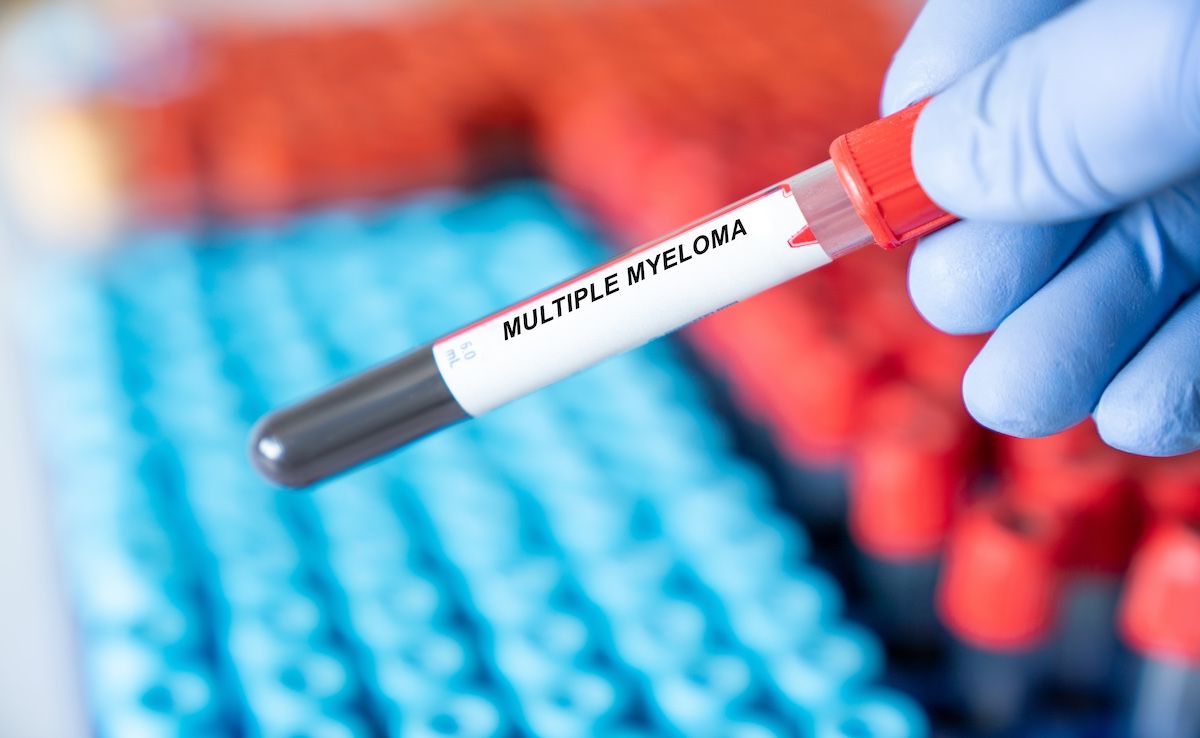A novel blood test could make it easier to diagnose and monitor multiple myeloma (MM), according to the investigators behind the research. The findings were recently published in the journal Nature Cancer.1
The SWIFT-seq method, which employs single-cell sequencing to profile circulating tumor cells (CTCs) in the blood, could offer a noninvasive alternative to traditional bone marrow biopsies.
SWIFT-seq was able to successfully capture CTCs in 90% of patients with MGUS, SMM, and MM. | Image credit: luchschenF – stock.adobe.com
“A lot of work has gone into the identification of genomic and transcriptomic features that predict worse outcome in MM, but we are still lacking the tests to measure them in our patients,” senior author Irene M. Ghobrial, MD, of Dana-Farber Cancer Institute, said in a press release.2 “As a clinician, this is the type of next-generation test that I would want to order for my patients.”
Ghobrial and colleagues explained that bone marrow (BM) biopsies are the primary method of staging and restaging patients with MM or its precursors, monoclonal gammopathy of undetermined significance (MGUS) and smoldering multiple myeloma (SMM).1 However, such biopsies are invasive and painful, which is why they are rarely used for continuous monitoring of patients.
“Additionally, MM is a partially heterogeneous disease, where a single-site BM biopsy may not provide comprehensive information on tumor burden and disease biology occurring throughout the body,” they wrote.
Fluorescence in situ hybridization (FISH) is an accompanying technique that can be used for risk stratification in MM and SMM. However, the technique requires a BM biopsy, and its sensitivity is limited.
Ghobrial and colleagues wanted to see whether there was a more effective—and less invasive—means of diagnosing and monitoring MM. They focused on CTCs, which can be detected in the peripheral blood of patients with MM and its precursors, and their quantification has been shown to have prognostic value. One study found that patients with high levels of CTCs were more likely to have aggressive disease than those with lower CTC levels.3
In the new report, Ghobrial and colleagues outline a new method of assessing CTCs in the blood.1 The system, called SWIFT-seq, uses single-cell sequencing to profile CTCs in the blood. The system means that clinicians can monitor patients with MM using a simple blood test instead of the more invasive BM biopsy.
SWIFT-seq is capable of quantifying CTCs, but it can also do more than that, and with a higher degree of accuracy than FISH, the authors said.
“SWIFT-seq is a powerful option as it can measure the number of CTCs, characterize the genomic alterations of the tumor, estimate the tumor’s proliferative capacity, and measure prognostically useful gene signatures in a single test and from a blood sample,” Ghobrial said in the accompanying press release.2
To develop the method, the investigators studied 101 patients and healthy donors. They found that SWIFT-seq was able to successfully capture CTCs in 90% of patients with MGUS, SMM, and MM, including in 95% of patients with SMM and 94% of patients with newly diagnosed MM.1 Ghobrial and colleagues noted that these patients are those most likely to benefit from improved risk stratification and genomic surveillance.
“We identified a gene signature that we believe captures the tumor’s circulatory capacity and may partly explain some of the unexplained mysteries of myeloma biology,” Elizabeth D. Lightbody, PhD, co-first author, said in a statement.2 “This can have a tremendous impact in how we think about curtailing tumor spread in patients with myeloma and could lead to the development of new drugs for patients.”
The investigators said under the current paradigm, it would take 4 separate assays (including FISH) to obtain the same level of characterization. Three of those assays require a BM biopsy, they noted.1
They said they believe SWIFT-seq could be “pivotal” for advancing blood-test tumor profiling for patients with MM.
“It would be amazing if we had a blood-based test that can outperform FISH and that works in the majority of patients—we think SWIFT-seq may just be that test,” Romanos Sklavenitis-Pistofidis, MD, PhD, co-first author, said.2
References
1. Lightbody ED, Sklavenitis-Pistofidis R, Wu T, et al. SWIFT-seq enables comprehensive single-cell transcriptomic profiling of circulating tumor cells in multiple myeloma and its precursors. Nat Cancer. Published online August 8, 2025. doi:10.1038/s43018-025-01006-0
2. Dana-Farber Cancer Institute unveils groundbreaking blood test for multiple myeloma. News release. Dana-Farber Cancer Institute. August 8, 2025. Accessed August 22, 2025. https://www.dana-farber.org/newsroom/news-releases/2025/dana-farber-cancer-institute-unveils-groundbreaking-blood-test-for-multiple-myeloma
3. Bertamini L, Oliva S, Rota-Scalabrini D, et al. High Levels of Circulating Tumor Plasma Cells as a Key Hallmark of Aggressive Disease in Transplant-Eligible Patients With Newly Diagnosed Multiple Myeloma. J Clin Oncol. 2022;40(27):3120-3131. doi:10.1200/JCO.21.01393
